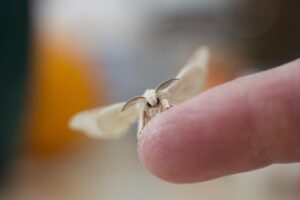10 Deadly Animal Defense Tactics That Involve Explosive Projectiles
They say it’s a dog-eat-dog world out there — and that’s just for dogs. Cute and cuddly creatures can often get by on charm alone. But in the wild, it’s a whole different story. When survival is on the line, nature doesn’t mess around. While many animals rely on the classics — sharp teeth, powerful claws, lightning speed, or clever camouflage — some species have gone full action-movie mode.
We’re talking about creatures that use explosions, chemical warfare, and high-speed projectiles to defend themselves. From beetles that spray boiling chemicals to lizards that shoot blood from their eyes, these bizarre defense tactics blur the line between biology and science fiction.
So buckle up — these are the wildest and weirdest self-defense strategies in the animal kingdom.
10. Bombardier Beetles: Masters of Chemical Warfare
When it comes to creatures that use some sort of “artillery” for self – defense, the bombardier beetle is an absolute must – mention. These little bugs are like tiny, living chemical weapon factories, and their defense mechanism is as fascinating as it is deadly.
Inside the abdomen of the bombardier beetle, there are two important sacks. One holds hydrogen peroxide. Now, we’re all pretty familiar with hydrogen peroxide; it’s that stuff we find in our medicine cabinets or first – aid kits, used for cleaning wounds and such. The other sack contains hydroquinone, which you might know from its cosmetic use as a skin – lightening agent that works by reducing melanin. Usually, both of these substances are quite safe.
But when this beetle feels threatened, it unleashes a pretty amazing (and terrifying for its foes) defense. It shoots these chemicals out of its rear end, and along with them, a third compound that acts as a catalyst. This catalyst causes an instantaneous chemical reaction. The hydrogen peroxide and hydroquinone, which are normally harmless on their own, react and form boiling water and benzoquinone.
This spray and gas mixture reaches its target at a scorching 212 degrees Fahrenheit or 100 degrees Celsius – the very temperature of boiling water. And it doesn’t matter if the target is a small insect or a larger creature. For smaller insects, it’s often an immediate death sentence. Larger creatures can be blinded by the spray, and even a human can get burned and scarred. The burning is not just due to the high temperature but also because of the caustic nature of the chemicals, which can also affect the respiratory system.
What’s even more impressive is that these bombardier beetles can fire off about 20 bursts before they run out of their chemical ammunition. And they’re not just spraying blindly. They have an orifice for firing this mixture that can move 270 degrees, which gives them an excellent aim at predators. So, if you’re thinking about approaching a bombardier beetle, you’d better think again, because there aren’t many places you can safely come at it from.
9. Velvet Worms Shoot Slime From Biological Gun Turrets
In the animal kingdom, being blind doesn’t mean you can’t land a perfect shot. Take the velvet worm — a creature that looks soft and squishy but comes locked and loaded with some seriously bizarre biological weaponry. With over 200 species found in jungles and forests across the world, these worms have earned a reputation for their unique hunting tactic that’s been dubbed the “silly string of death.”
Lacking sharp vision, velvet worms detect air currents to sense when prey is nearby. Once they’re within range, two nozzles extend from their head and fire out foot-long ropes of slime — think Spider-Man but far more disgusting. The goo quickly hardens on contact, trapping the unfortunate victim in place.
This slime isn’t just for offense. Velvet worms also use it defensively — to immobilize small predators or, at the very least, slow down anything brave enough to chase them. Either way, a face full of fast-drying sludge is usually enough to buy them time.
Once their target is trapped, the velvet worm saunters over and gets to work. A knife-like structure in its mouth slices open the prey, then the worm injects a digestive saliva that liquefies everything inside. No chewing required — just a smooth slurp of nutrient goo.
It’s equal parts creepy and cool — nature’s own version of a living glue gun with a taste for liquefied snacks.
8. Hagfish Expel Slime That Expands 10,000 Times
The velvet worm might feel pretty good about its gooey attack — but when it comes to slime supremacy, the hagfish reigns supreme. These jawless, spineless, deep-sea dwellers have remained virtually unchanged for over 500 million years, and once you see what they can do, you’ll understand why evolution decided not to mess with perfection.
When a hagfish feels threatened, it activates its ultimate defense system — an explosion of slime that would make a cartoon villain jealous. Their bodies are lined with slime glands that eject a combination of mucus and ultra-fine protein threads. The moment this mix hits seawater, it expands 10,000 times its volume, transforming the surrounding water into something that feels like a vat of Jell-O.
For a predator, this is a nightmare scenario. The slime doesn’t just coat — it chokes. It clogs up mouths and gills, making it nearly impossible to breathe or bite down. Any fish thinking about snacking on a hagfish will find itself coughing up slime and retreating fast — or risking suffocation by goo.
And it’s not just sticky — it’s strong. The protein threads in hagfish slime are incredibly tough and stretchy, rivaling spider silk in durability. That means even if you try to break through it, the goo holds its ground.
Long story short: if you’re swimming near the bottom of the ocean, don’t mess with the hagfish. It’s got the oldest — and stickiest — defense in the sea.
7. Sea Cucumbers: The Masters of Ejecting Internal Organs from Their Anus for Defense
Sea cucumbers might not be the most aesthetically pleasing creatures in the ocean, but they sure do grab a lot of attention for their truly out – of – this – world self – defense strategy. It’s like they’ve turned their butts into cannons and are ready to fire out their own insides at a moment’s notice.
The way this amazing (and a bit gross) defense mechanism works can vary from one type of sea cucumber to another. Some sea cucumbers take a rather extreme approach. They actually shoot out their internal organs, much like a fighter jet releases flares to divert enemy missiles. And here’s the crazy part – these organs can grow back later! It’s like having a built – in spare parts system.
Then there are other sea cucumbers that have a different tactic. They fire off strands of a sticky substance. Picture it as a web – like trap. These strands are designed to snare potential predators, giving the sea cucumber a chance to make its escape. In this case, the threads that are released are known as a Cuvierian organ.
Now, here’s where it gets really interesting. These tubes of the Cuvierian organ are attached to the organs that the sea cucumber uses for breathing, and yes, they breathe through their butts! When a predator comes along and tries to make a meal out of the sea cucumber, the organs are ejected. As they fill with seawater, they expand.
And these sticky threads are no joke. They’re as sticky as a spider web, which means they can easily snare the attacker. In some cases, if the predator can’t break free, it can even lead to its death. It’s like the sea cucumber has its own little trap set up, ready to catch and deal with any threats that come its way.
6. Texas Horned Lizards Shoot Blood Out of Their Eyes
Looking like a tiny dragon with an attitude problem, the Texas horned lizard already has the aesthetics of a creature you probably shouldn’t mess with. It’s covered in sharp-looking spikes, blends in with dusty terrain, and has the kind of no-nonsense stare that screams “try me.” But if camouflage and intimidation don’t work, this little guy has one of the most metal defense moves in the animal kingdom — it shoots blood out of its eyes.
Yeah. Blood. From. Its. Eyes.
Here’s how it works: when threatened, the lizard restricts blood flow from its head. This causes the ocular sinuses (basically, the pockets behind its eyes) to fill with blood and build up pressure. Then, using specialized muscles, it squeezes and bursts that pressure outward, firing a thin jet of blood up to five feet at its attacker.
And it’s not just dramatic — it’s functional. The blood tastes foul to many predators like canines, making it an effective deterrent. And the lizard can pull this stunt multiple times in a row, in case the first squirt wasn’t convincing enough.
Next time you think you’re having a bad day, just remember — at least you’re not under so much pressure that you start squirting blood from your eyeballs.
5. Northern Fulmar Gulls Use Vomit as a Weapon
In nature, if you can’t fight with claws or venom, sometimes the best defense is just being absolutely revolting. Enter the northern fulmar gull, a seabird that’s basically nature’s version of a biological prankster — because when danger comes knocking, it throws up. On purpose. As a weapon.
Fulmars have a special oil stored in their stomachs — a thick, sticky, foul-smelling goo that’s custom-made for disaster. If a predator bird gets too close to their nest, fulmars vomit this oil directly onto them, coating them in a nasty mess that does a lot more than just smell awful.
Here’s where it gets vicious: seabirds need a waterproof coating on their feathers to float and fly. The fulmar’s vomit strips that coating away, leaving the victim grounded — or worse, helpless in the water. It can mat feathers so badly that the affected bird can no longer fly or stay afloat, basically delivering a slow and messy death sentence.
It’s defensive puke at its most diabolical — and somehow, that makes it even more terrifying.
4. Archerfish Shoot Prey with Water Jets
Not all hunters need claws or fangs — some just need a really powerful squirt gun. The archerfish, a small but incredibly precise aquatic sniper, uses jets of water to blast insects out of the sky.
Living in mangroves and estuaries, this little fish is a natural marksman. It targets prey perched on leaves or branches above the water — sometimes even insects mid-flight — and fires a burst of water strong enough to knock them down. The moment the stunned victim hits the water? Game over — the archerfish zooms in and swallows its prize.
Despite only being a few inches long, the archerfish can shoot jets several feet with pinpoint accuracy. If it misses (which isn’t often), it doesn’t give up. With one gulp of water, it can fire up to seven rapid shots, like a living squirt-gun machine gun.
Its aim is so consistent, in fact, that scientists have studied it to better understand ballistic physics and visual targeting. In short, the archerfish doesn’t just hunt — it takes the shot, and it lands it almost every time.
3. Spitting Spiders: The Deadly Spit – and – Snare Artists
Arachnophobia is a fear that many humans share, and if we think about it, smaller insects must be absolutely terrified of spiders too. Spiders have long been known as formidable predators, thanks to their creepy webs and potent venom. Most spiders follow a pattern – they’re either passive hunters, waiting for prey to get caught in their webs, or the more aggressive ones need to actively chase down their prey. But then, there are the spitting spiders, who break the mold.
Just as their name implies, spitting spiders have a truly unique and terrifying hunting technique. They can launch a spit attack at their prey, and it’s not something to be taken lightly. This spit attack travels at an astonishing speed of 30 meters per second. To put that into perspective, that’s over 67 miles per hour! It’s like a high – speed projectile aimed directly at their unsuspecting victims.
Once the spit hits its mark, it’s not just a random splash. The spit contains silk, which works like a magical snaring net. It quickly ensnares the prey, holding it firmly in place. This gives the spitting spider the upper hand. With its prey immobilized, the spider can then move in for the kill. It swiftly injects the prey with its venom, starting the process of turning the captured creature into a meal.
2. There’s an Exploding Species of Termite
Deep in the jungles of French Guiana lives a species of termite that takes self-sacrifice to explosive extremes. These bugs quite literally live their whole lives building up to one final, devastating act: kamikaze defense.
As these termites age, they begin to secrete a blue chemical from a special pair of glands. This chemical doesn’t go anywhere — it just builds up inside a pouch in their abdomen like a biological bomb waiting for the right moment. Over time, their bodies become walking grenades.
Here’s the genius part: as termites get older, they become less useful to the colony. Their mandibles dull, their bodies slow — they’re basically retirees. But instead of sipping bug margaritas, they become the first line of defense when the colony is under attack.
When threatened, they trigger their built-in bomb, mixing the blue goo with their saliva to create a toxic chemical blast that kills or paralyzes invading insects. The older the termite, the bigger the bang — and while the blast costs the termite its life, it buys time for the younger, more vital colony members to survive.
These little warriors don’t just go out with a bang — they turn their final breath into a deadly explosion.
1. Pygmy Sperm Whales Shoot Poop Clouds
When it comes to self-defense, not every creature can rely on brute strength — especially if you’re a small whale in a big ocean full of sharks and killer whales. That’s the reality for the pygmy sperm whale, a modest-sized marine mammal that maxes out around 14 feet long. Not exactly tiny, but definitely snack-sized to a hungry orca.
What do they do when things get hairy? They poop and run — but with strategy.
Pygmy sperm whales have evolved a bizarre but effective escape tactic that mirrors the ink cloud of a squid. Inside their intestines is a specialized sac filled with a dark, reddish-brown liquid — a sort of biological smoke bomb. When a predator gets too close for comfort, the whale releases up to three gallons of this murky sludge, clouding the water in an inky mess.
The result? Instant confusion. The predator loses track of the whale in the visual chaos, and the little leviathan gets a head start to swim away. It’s disgusting, brilliant, and surprisingly effective — proving once and for all that sometimes the best defense really is a tactical poop cloud.
























